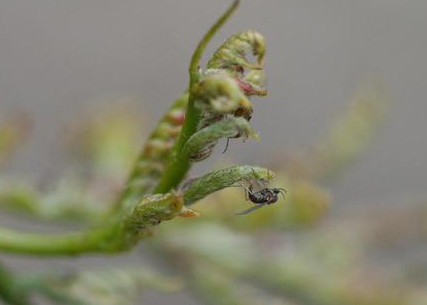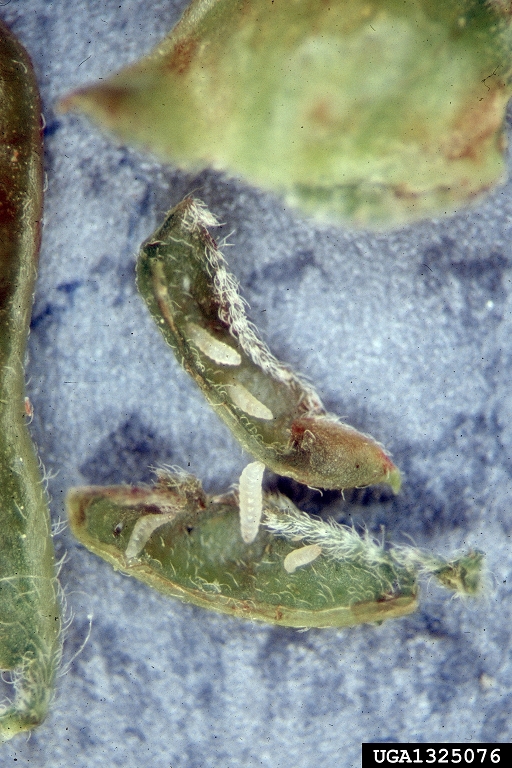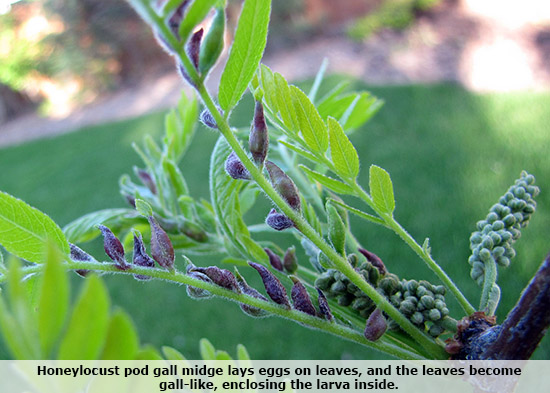Integrated Pest Management
Honeylocust Pod Gall Midge
Pest Description
- adults: 1/8 inch; tiny flies
- females: black with red abdomen; males: black
- larvae: 15/64 inch and white yellow in color; found inside rolled honeylocust leaves
- eggs: minute, kidney shaped and yellowish red
Host Plants, Diet & Damage
- honeylocust
- larvae feed on honeylocust leaves
- leaflets are curled into pod-shaped galls
- galls; premature leaflet drop; leaflet browning; leaflet and twig dieback
Biology, Life Cycle & Damaging Life Stage
- overwinter as adults around honeylocust trees
- emerge prior to honeylocust budbreak in spring
- females lay one to several eggs on individual leaflets
- larvae can be found inside of curled leaflets
- larvae pupate inside pod gall
- at least three generations per year
- larvae are the damaging stage
IPM Recommendations
- In landscape situations in Utah, management is often not needed.
- Monitor honeylocust buds and new shoot growth for eggs in the spring (late-March to April) with a hand lens.
- Target early eggs and egg-laying adults with insecticides.
- Apply an insecticide (carbamate; horticultural oil; pyrethroid; spinosyn) to leaves when monitoring indicates that eggs are present in early spring.




